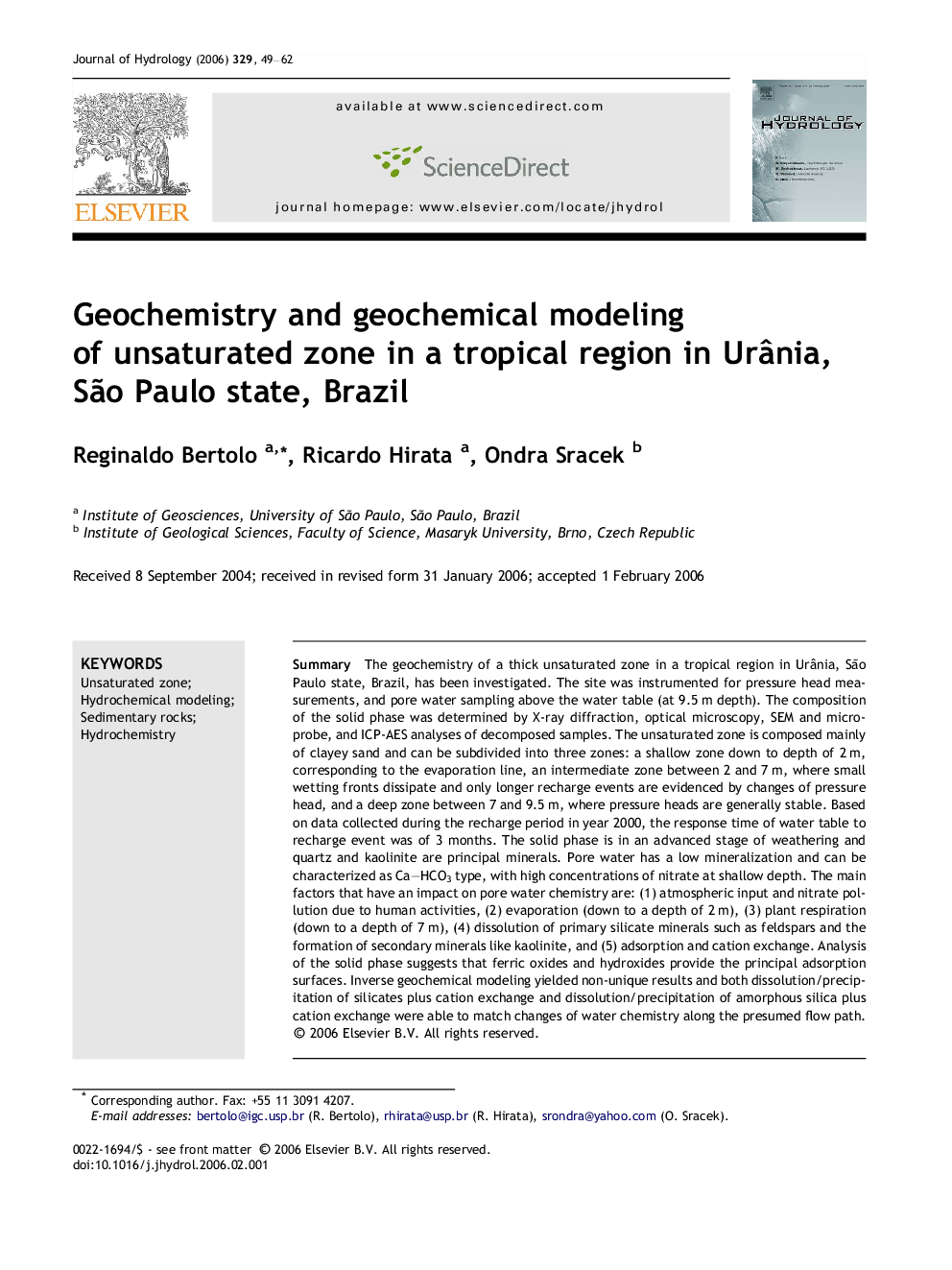| کد مقاله | کد نشریه | سال انتشار | مقاله انگلیسی | نسخه تمام متن |
|---|---|---|---|---|
| 4580223 | 1630157 | 2006 | 14 صفحه PDF | دانلود رایگان |

SummaryThe geochemistry of a thick unsaturated zone in a tropical region in Urânia, São Paulo state, Brazil, has been investigated. The site was instrumented for pressure head measurements, and pore water sampling above the water table (at 9.5 m depth). The composition of the solid phase was determined by X-ray diffraction, optical microscopy, SEM and microprobe, and ICP-AES analyses of decomposed samples. The unsaturated zone is composed mainly of clayey sand and can be subdivided into three zones: a shallow zone down to depth of 2 m, corresponding to the evaporation line, an intermediate zone between 2 and 7 m, where small wetting fronts dissipate and only longer recharge events are evidenced by changes of pressure head, and a deep zone between 7 and 9.5 m, where pressure heads are generally stable. Based on data collected during the recharge period in year 2000, the response time of water table to recharge event was of 3 months. The solid phase is in an advanced stage of weathering and quartz and kaolinite are principal minerals. Pore water has a low mineralization and can be characterized as Ca–HCO3 type, with high concentrations of nitrate at shallow depth. The main factors that have an impact on pore water chemistry are: (1) atmospheric input and nitrate pollution due to human activities, (2) evaporation (down to a depth of 2 m), (3) plant respiration (down to a depth of 7 m), (4) dissolution of primary silicate minerals such as feldspars and the formation of secondary minerals like kaolinite, and (5) adsorption and cation exchange. Analysis of the solid phase suggests that ferric oxides and hydroxides provide the principal adsorption surfaces. Inverse geochemical modeling yielded non-unique results and both dissolution/precipitation of silicates plus cation exchange and dissolution/precipitation of amorphous silica plus cation exchange were able to match changes of water chemistry along the presumed flow path.
Journal: Journal of Hydrology - Volume 329, Issues 1–2, 30 September 2006, Pages 49–62